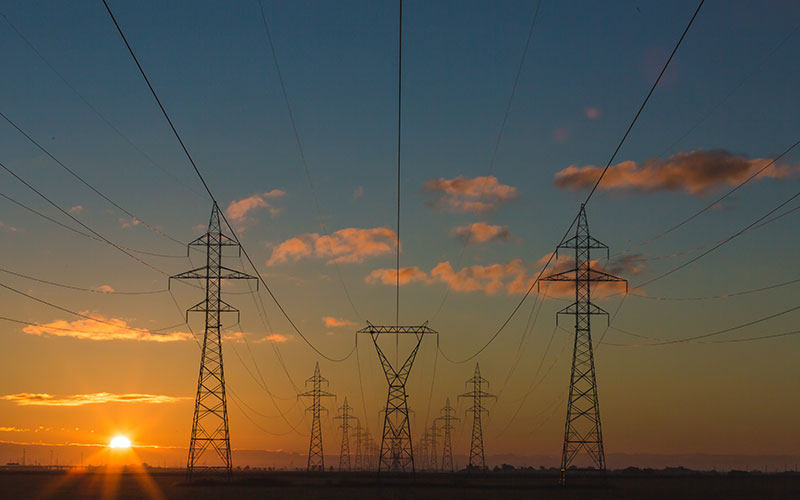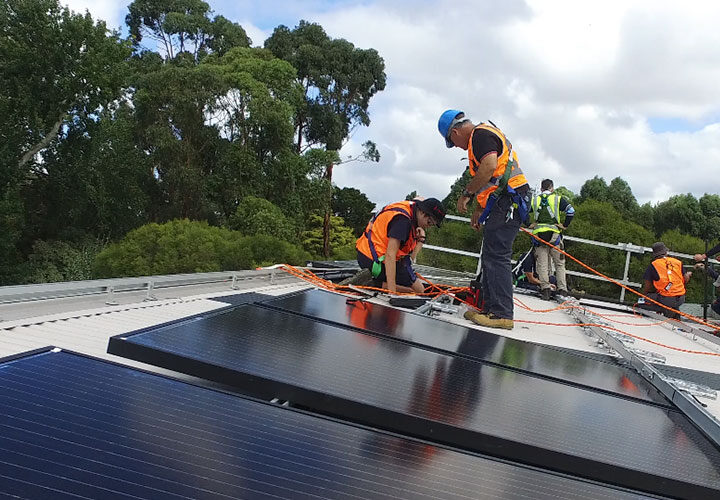
Feed-in tariffs
What are solar feed-in tariffs?
Solar feed-in tariffs are incentives introduced in 2008 to encourage people to invest in solar energy. In a typical on-grid solar power system, the solar you generate must be used instantly, or it goes to waste. Rather than wasting the power, your system can export the excess energy to the national grid. Your electricity retailer pays you a feed-in tariff for the amount of energy you export to the grid, and the credit appears on your electricity bill.
Most feed-in tariffs pay you under 10c per kWh of energy you export, so it’s not a huge amount. But it’s a nice little bonus to help offset the electricity you purchase when the sun goes down. If you don’t like the idea of exporting your excess solar energy, you should consider adding a solar battery. That way, you can store your excess solar energy and use it in the evenings or when your solar panels aren’t producing enough to power your home.
Who sets feed-in tariff amounts?
Feed-in tariff prices are different in every state. For example, the government sets a minimum mandated feed-in tariff rate in Victoria and regional Queensland. Electricity retailers can certainly elect to offer customers a better deal, but they can’t go below the minimum.
In other states, there is no mandated minimum amount and it’s up to retailers to determine how much they offer (if anything at all). So, it’s always encouraged to shop around when choosing an electricity retailer, especially when you switch to solar energy.
It’s also worth mentioning that some states only offer feed-in tariffs for certain system sizes. The idea is to stop people from installing enormous systems and exporting the majority of their solar to the main grid for profit. So, before making a decision, always ensure you know the feed-in tariff rules in your state.
Should I use solar batteries instead?
The choice to opt for a solar battery or not is a very personal one. Solar batteries still have an upfront cost associated with them, and the price may be out of reach for some households. If that’s the case, it’s great that feed-in tariffs exist to give you a little reward for exporting surplus power to the main grid.
However, if you can afford a solar battery, it is definitely the preferred option. To illustrate why, let’s say you generate excess solar energy during the day and export it back to the main grid for 6c per kWh. It’s nice to receive a credit on your bill, but the reality is, without battery storage, you effectively buy back your own solar energy for a higher rate which can be over 50c per kWh in the evenings. So, all you’re really doing is slightly reducing the amount you pay for power in the evenings. With a solar battery, you’d be powering your home with free solar energy in the evenings.
The other option is to do both. You can install a solar battery so you can access free solar energy in the evenings. But if your solar panels fully charge your battery during the day, you may find you still generate some excess power. In that case, your solar energy powers your home first, your battery second, and exports to the main grid third. You’ll still receive a feed-in tariff credit for the amount you export, but you rarely have to draw power from the national grid.
Will solar feed-in tariffs be around forever?
There is no indication that feed-in tariffs are on the way out. However, the rates are gradually declining. When feed-in tariffs first came into effect in 2008, the rates were much higher. This was reflective of the considerable cost of installing solar systems back then. Since 2008, however, installing a residential solar system has become much cheaper. As such, feed-in tariffs have been reduced.
It’s difficult to say what the future holds for feed-in tariffs. As solar battery storage becomes more affordable, homeowners will see more value in storing and using their excess solar in the evenings. As we mentioned above, there is little point in selling solar for a low price and buying power back at an increased price. So, as solar batteries get cheaper, we can imagine solar feed-in tariffs will decrease further, if not disappear altogether.
Need help understanding feed-in tariffs?
There are a few complexities involved in choosing your perfect solar system. One of those is understanding how feed-in tariffs work and whether they can benefit you. Feed-in tariffs also lead to your ideal system size, whether you should install a battery, and how many solar panels you need. So, if there is anything you’re unsure about, contact the friendly team at Tindo Solar and we can always help you with the right advice.

